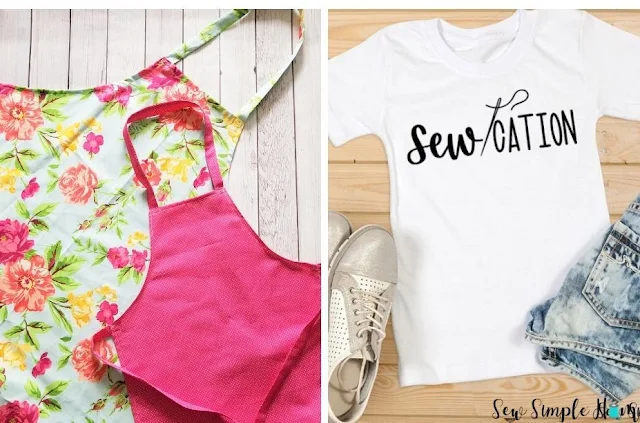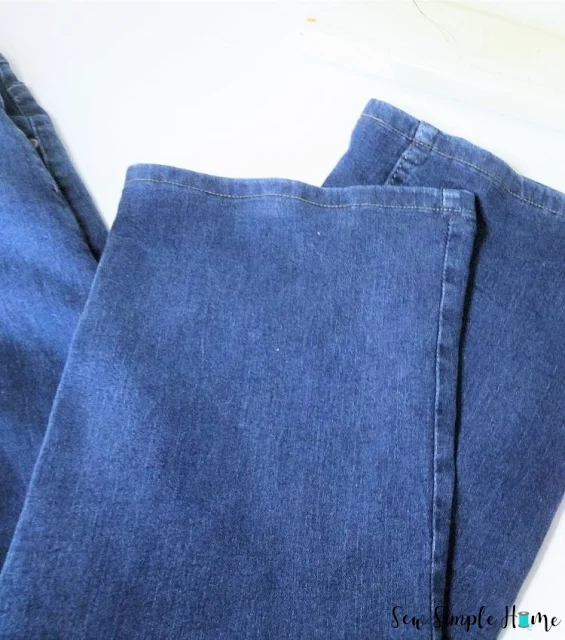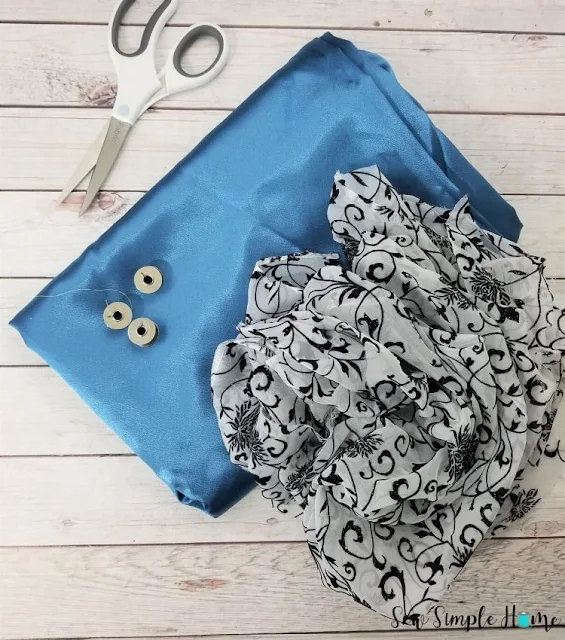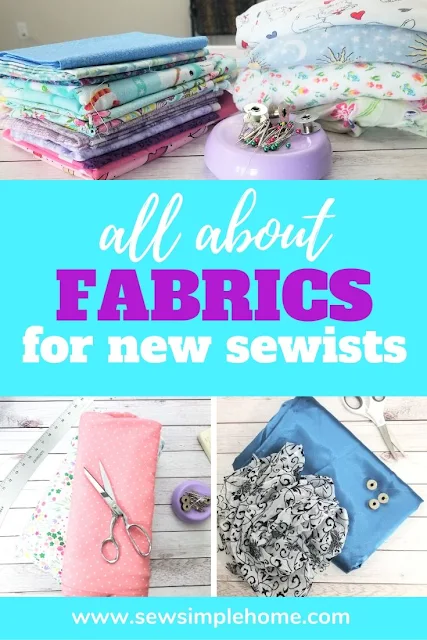When you first learn to sew, one of the perks is going to the fabric store and choosing fabrics for your project.
But as many beginner sewists learn, choosing the right fabric for the right project is VERY important. Picking the wrong fabric can end in frustration, ruined projects and often a few choice words.
Let's start you off on the right foot! How about a little guide to understanding different types of fabric?

This post contains affiliate links to products I recommend. I do make a portion off any you may purchase. See full disclosure here.
What does that mean? All fabric is made up of some type of fiber or yarn. These fibers interlock to create the actual fabric structure. There are two types of fibers.
Natural Fibers vs. Synthetic Fibers
Natural fibers are made from plant sources like cottons and flax or a protein source like silk which is made from silk worms. These are found in nature and made into yarn that is made into fabric.Synthetic fibers are those that are manufactured. They can be a combination of cellulosic materials like wood and plastic or they can be a polymer which is a chemical made into a filament or thread.
Synthetic fibers are created and not naturally found on their own in nature. Some common synthetic fibers are rayon, acetate, nylon and polyester. Many of these are used in the clothes we wear and the home decor we love.
Synthetic fibers are usually designed for a specific purpose, like to be softer, to be fire resistant, oil resistant or even stain resistant.
Fibers Into Fabric
The fabrics we use every day are made of fibers that are interlaced together. The weave of the fabric determines the weight and stretch of the fabric. Fabric type can be confusing to people because you can buy something that is cotton but isn't what you need for a quilt or a t-shirt.
That is why it is important to not only know what fibers are used in the material but also what the weave of the materials is.
Woven fabric is created when fibers are interlaced at right angles to each other. Woven fabrics do not stretch.
Knit fabric is created when interlocking yarns are looped together. This allows the fibers to stretch and fit more snug to the body.
Non-woven fabric is created when interlocking fibers are fused together with heat and moisture. An example of this would be felt.
You can learn more about the make up of fabric in our post on fabric anatomy. You'll learn all the parts of fabric to better help you in choosing and cutting out fabric for projects.
Different Types of Fabric
There are so many different types of fabrics. We are going to focus on those that are the most common in simple sewing projects.Don't forget to read the label on the fabric bolt to know exactly how to care for your fabric. We have a little guide to washing fabrics that will help.
Cotton or Calico - most common fabric for beginner sewing projects. Cotton fabrics are woven and can be a light to medium weight. They are made with 100% cotton and can shrink a lot.
It is best to wash cotton fabrics before sewing. Cotton fabrics are used for lots of projects like bags, quilts and blankets, pillows, aprons and clothing.
Fat Quarter - when you hear the term "fat quarter", isn't a type of fabric, it is actually a cut of fabric. If a pattern calls for a fat quarter, you are looking for a cotton or calico fabric that is folded up into a square and sold already cut.
You go to the cut counter at a fabric store and ask for a 1/4 yard of fabric, they will cut it horizontally across the bolt to cut a 9 x 44" piece.
A fat quarter is a 1/4 yard of fabric that is cut in a rectangle of 18 x 22". This piece is than folded into a square and sold as a cut piece of fabric.
Fat quarters are most often used in quilting, but can be use for bags, pillows, same woven projects like wallets and pouches. They are a great way to purchase contrasting fabrics for projects without spending a ton.
Flannel - this is a napped fabric made from cotton or sometimes rayon. It has a little fuzz and works great for nightgowns, pajamas, blankets, and sheets.
Fleece and Minky - both of these fabrics have a pile. That means they are fuzzy and thicker than most fabrics. They also both a a bit of stretch. They are great for blankets and baby projects.
Home Decor - these fabrics are usually a heavier weight. They can be duck and canvas fabrics but they also can have a special treatment for water resistance or flame retardant.
Jacquard, brocade or damask - this heavy and firm fabric has an elaborate weaved design. The fabric has a slightly raised design from the weave and has a glossy sheen. Often used for dresses, upholstery, and home decor projects.
Special Occasion Fabrics - these include fabrics like satin, silk, tulle and taffeta. Many of these fabrics have a plain weave or a satin weave. They are slippery and need a small size sewing needle to ensure a successful sewing experience.
There you have it!! Fibers are made into yarns that are woven into fabrics.
Different types of fabrics categorized by the type of fiber and the weave.
To be the most successful in your sewing, make sure to read the pattern carefully and see what fabrics are suggested. This will cut back on frustrating sewing experiences quite a bit.
Don't forget that we also have a Sewing Basics Course that is perfect for brushing up on those sewing skills.


















No comments
I'd love to hear from you!